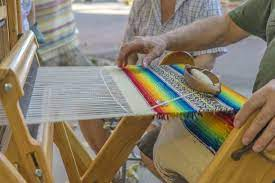
Timket is celebrated every January throughout the country. This lively, three-day observance, Timkat is an Orthodox Christian celebration of the Ethiopian Epiphany. It marks the baptism of Jesus Christ in the Jordan River.
Pilgrims come from far and wide to take part in the festival and witness the re-enactment of the baptism. All over the country large crowds assemble as the religious festivities commence, with spectacular processions, song, dance and prayer.
The festival lasts for three days and is at its most colourful in the capital, Addis Ababa, where everyone gets involved in the celebrations.
Timket traces its roots back to biblical times. In the early days of Judaism, a sacred box overlaid with gold was kept in the most holy place in the Jewish temple. Known as the Ark of the Covenant, it represented the coming Messiah.
Fast forward to the first millennium, when Jesus of Nazareth was hailed by many as that long-awaited Messiah. His earthly ministry was marked by baptism in the Jordan River. Ever since, Ethiopian Orthodox churches have treasured and closely guarded their own model of the Ark of the Covenant, called a tabot. The tabot only leaves the church during Timket, when it’s carried with great pomp to a nearby pool or river and immersed, along with many of the Christian faithful, in commemoration of Jesus’ baptism.
The festival takes place in Ethiopia every year on January 19 (or January 20th on leap years), starting with Ketera (preparations) the day before, and it lasts for three days.
In Addis Ababa, the festival is particularly spectacular. The streets are adorned with green, red and yellow to represent the Ethiopian flag and priests walk through the streets holding colourful and richly decorated umbrellas.
The religious ceremony commences on the first day when models of the Ark of the Covenant, called Tabots, are carried to the river in a procession led by the most senior priest of each church, who carry the arks on top of their heads. At dawn the water is blessed and sprinkled on the participants, some of whom jump in the water to renew their baptismal vows.
The Tabot symbolizes the Ark of the Covenant and the tablets describing the Ten Commandments, which God gave to Moses on Mount Sinai to serve as the core principles of the moral behavior for humanity.
The original Ark of the Covenant is said to be under permanent guard in Northern Ethiopia, protected by priests who have sworn never to leave the sacred grounds.
The second day of Timkat marks the main celebrations, with Orthodox Ethiopians from every segment of society merrily march through the streets in a riot of colour, singing, dancing and feasting. All but one of the Tabots are returned to their respective churches.
On the third day of Timkat, known as the feast of St. Michael the Archangel, the Tabot of St. Michael’s Church is returned, accompanied by a procession of priests and believers.
The Ethiopian Herald January 21/2020
BY STAFF REPORTER




